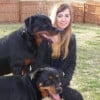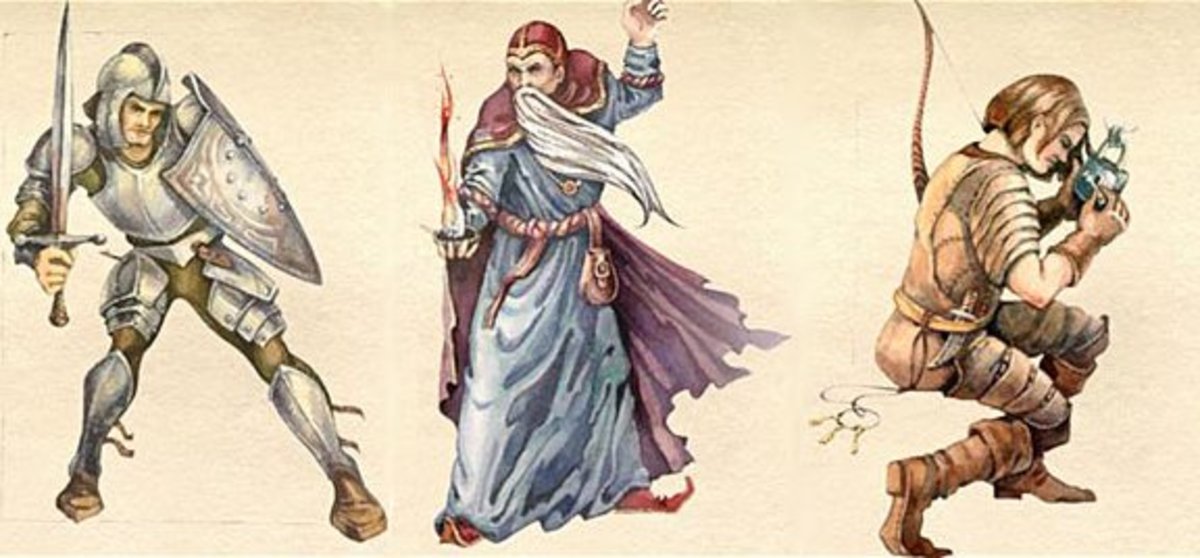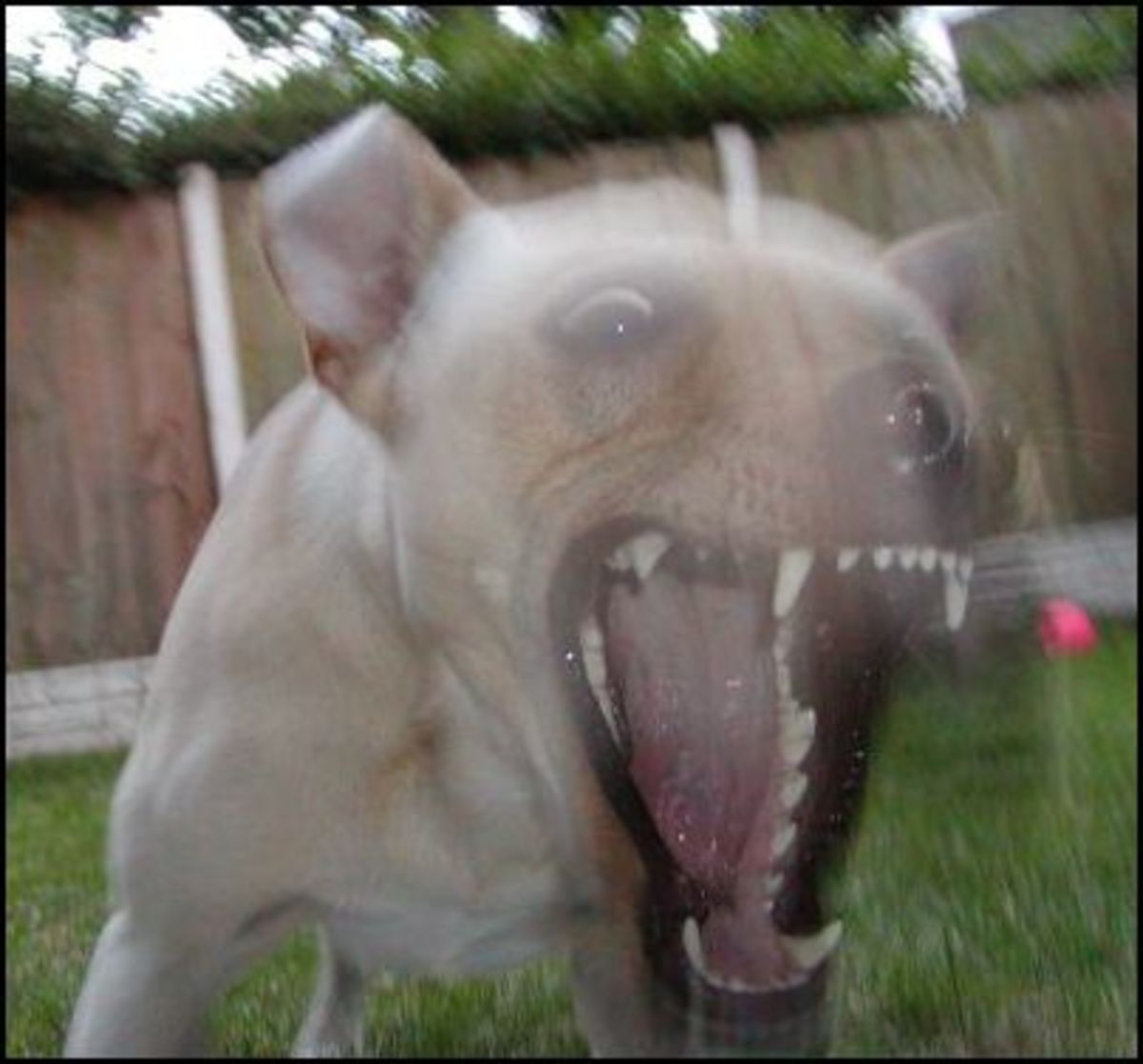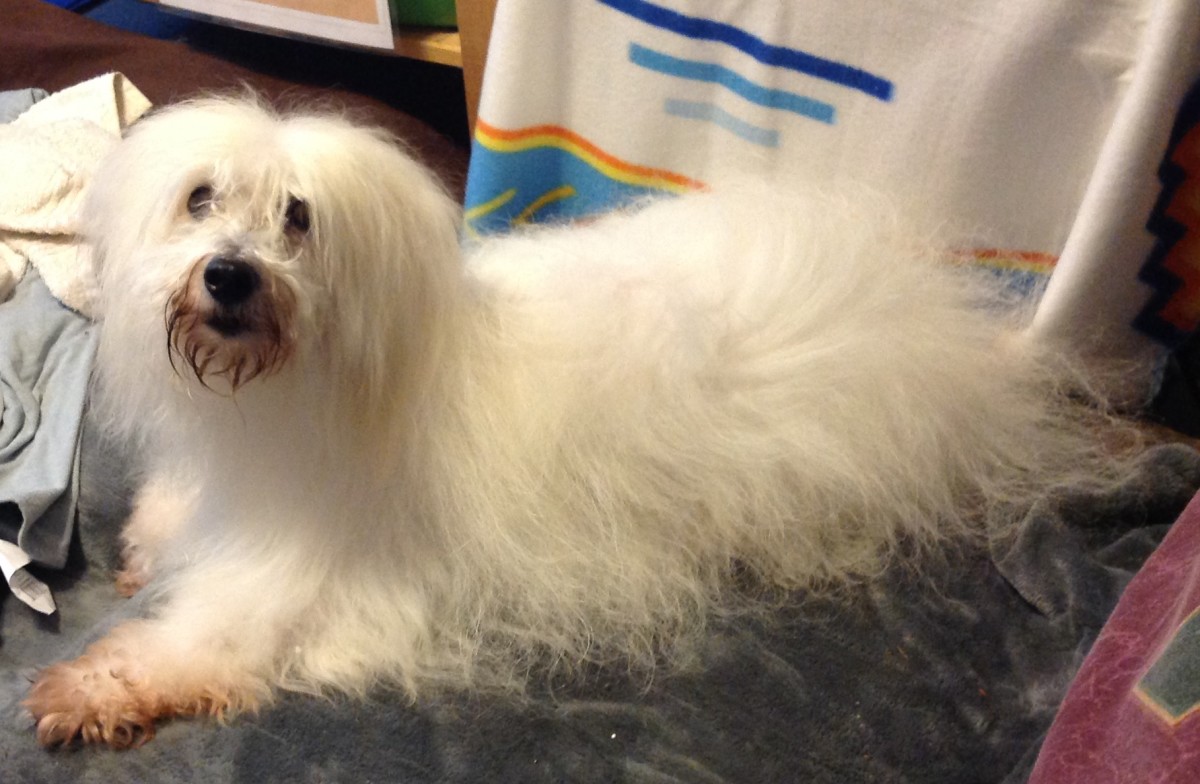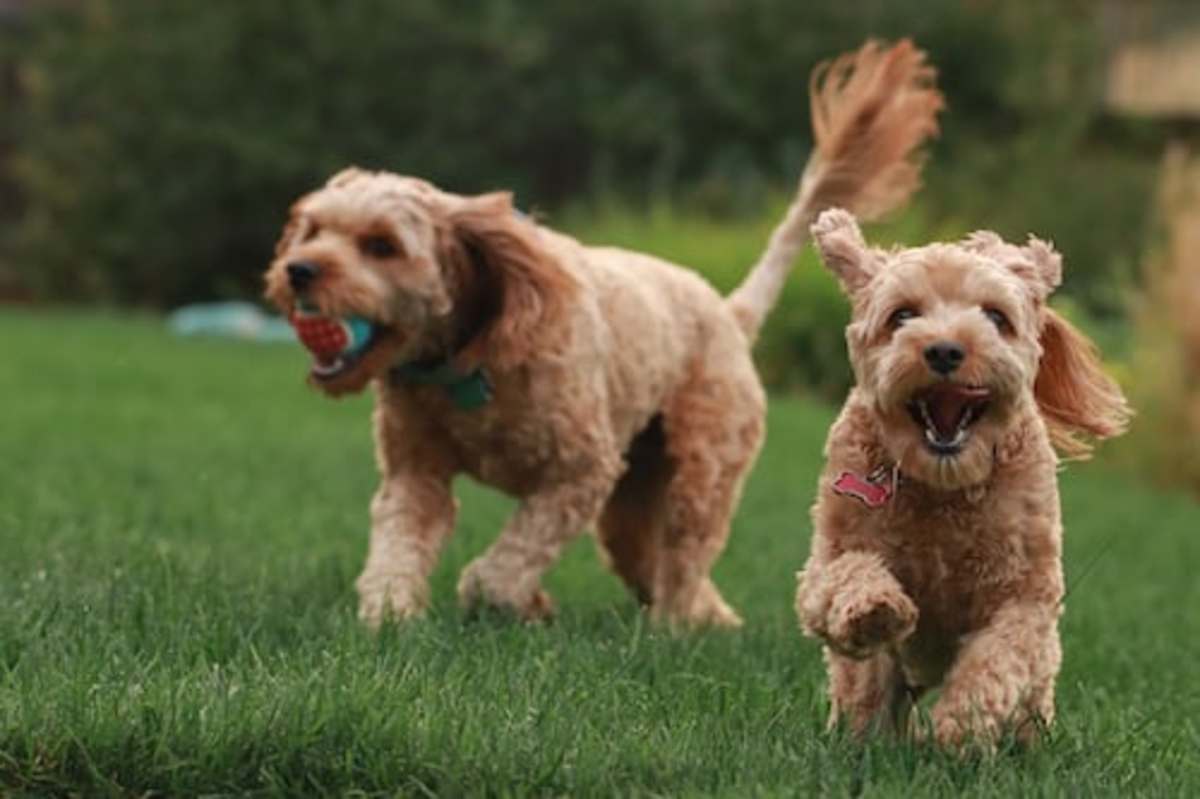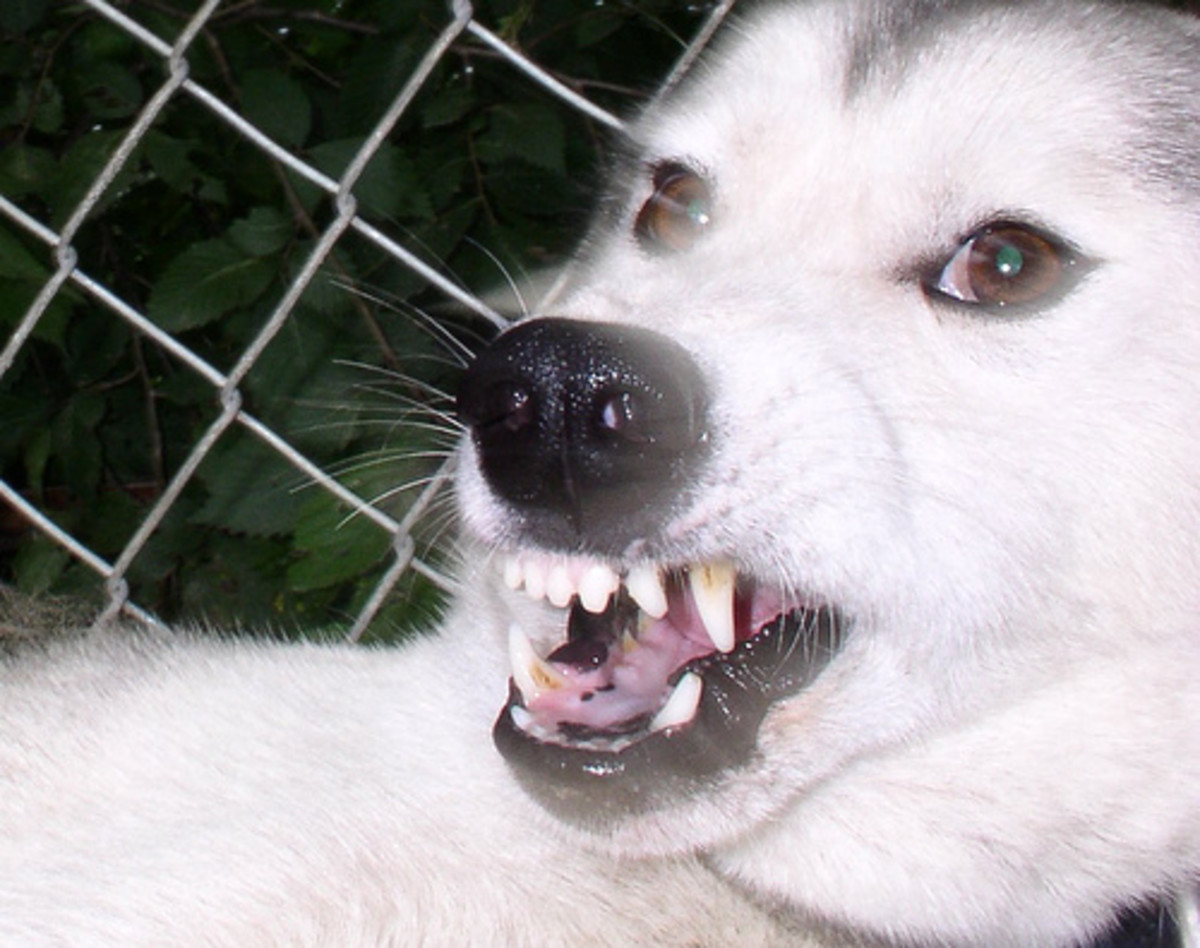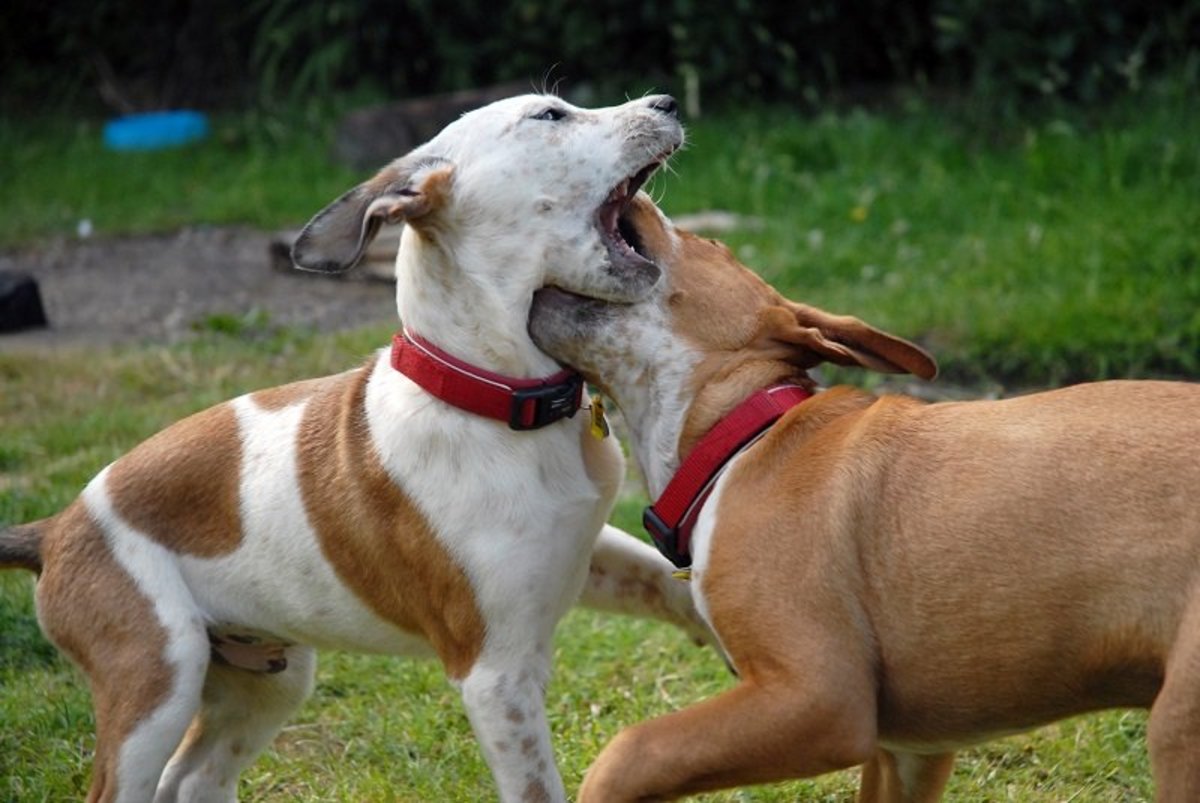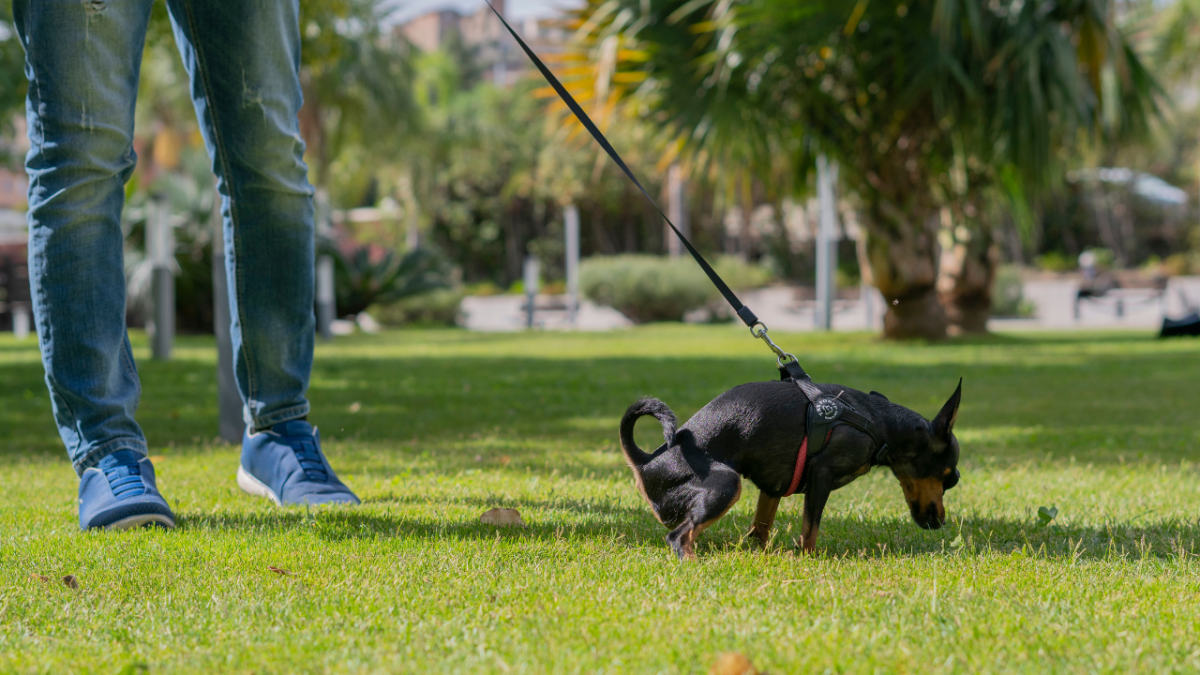Thoughts on Calming Signals in Dogs
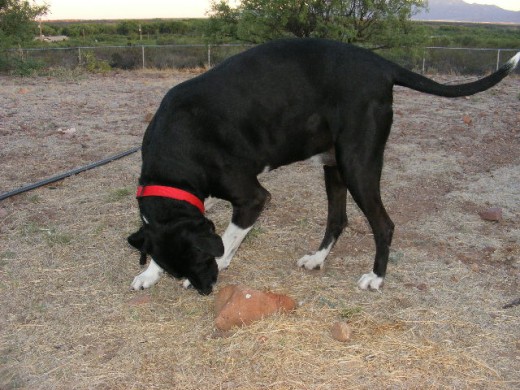
In a previous hub, published a couple of years ago, I discussed the role of calming signals in dogs and how dogs use them to show signs of appeasement/stress towards other dogs and humans. For those not familiar with calming signals, I suggest reading my hub "Understanding Dog Calming Signals", or better, I recommend purchasing the book "On Talking Terms with Dogs: Calming Signals" by Norwegian dog trainer Turid Rugass. It is thanks to Turid's years of studies and observations that today we can decipher many of the cues dogs send to other dogs and humans in their attempt to communicate.
As I watch dogs interact throughout the day in my boarding and training business, I have noticed though that's there's more than appeasement going on. Yes, the dog is trying to communicate an intent to do no harm, but if we carefully look at each calming signal and try to decipher it, we will see that they mostly are conveying one important message that delves a little deeper into the "do no harm" intent. I find this very interesting, and would like to share my thoughts and theories.
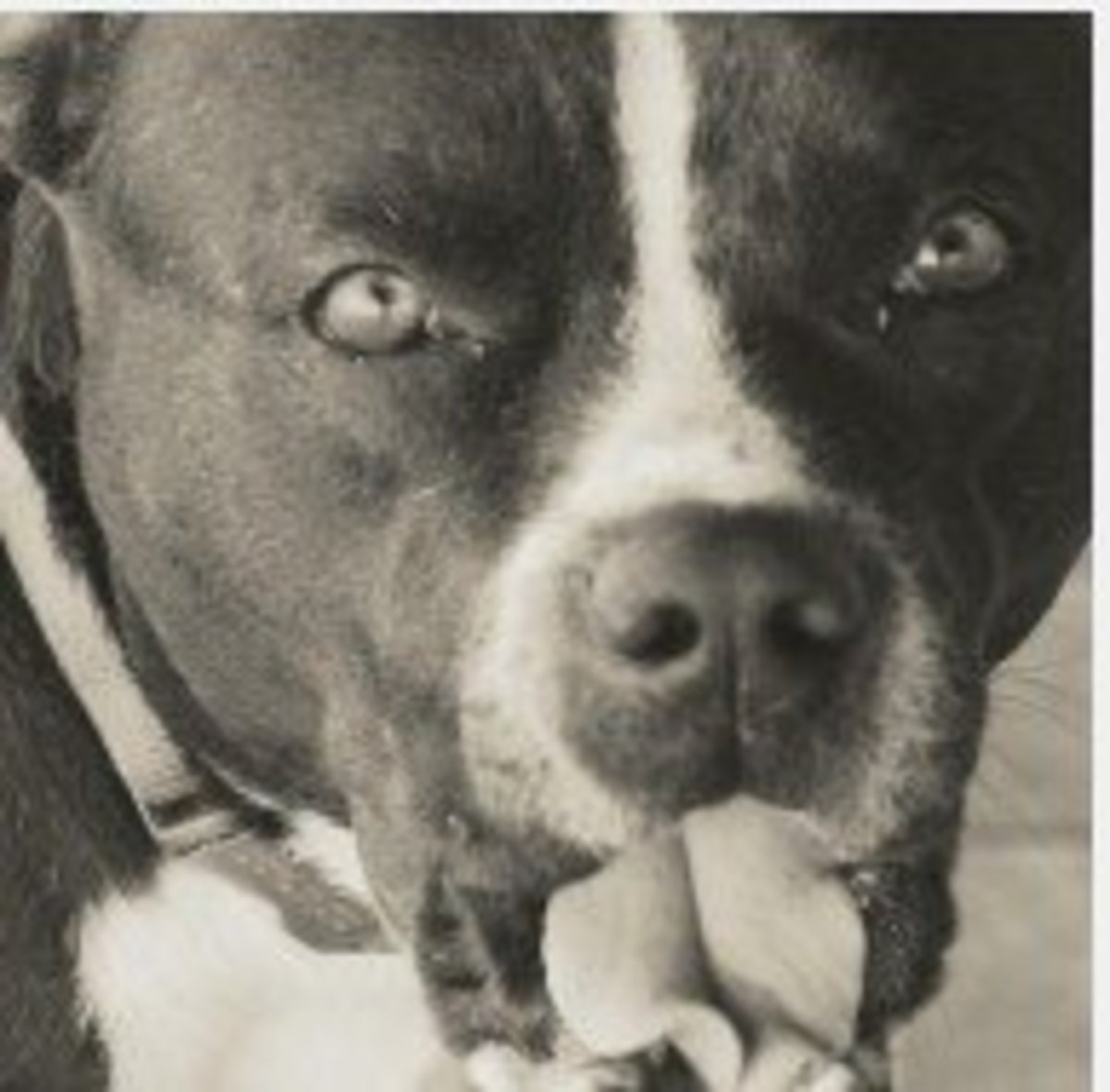
Offensive or defensive aggression?
Animal behavior professionals tend to distinguish between offensive and defensive aggression. In offensive aggression, the dog has an intent to do harm, he therefore moves forward and tries to appear more intimidating. In defensive aggression, the dog may rather not do harm, but may bite if he has no other solution. The dog may try to move away and will attempt to make himself smaller. Finally, more confusingly, there are dogs who manifest ambivalent behaviors, by alternating offensive and defensive behavior. The dog may have ears flattened but may also be lunging forward.
Thoughts on Dog Calming Signals
Calming signals is a term used to depict appeasement signals, but what's the real purpose of them? We have to read Turid Rugass' book to learn about them, but dogs do not read books nor do they go to school where these signals are explained to them. They simply interact with other dogs and understand them. How is that? I think something similar takes place to what happens in the human world. For instance, in the human world, we know that handshakes are a way to communicate friendship, but what's really in a handshake? Yes, we know that it's a little ritual where two people grasp each other's hands and accompany it with a brief up and down movement, but history buffs know that there's more to it.
If we take a look back in ancient times, we will notice how men were often in conflict and they would "bear arms." The real underlying meaning of the handshake was therefore a demonstration that, back in time, medieval knights were not concealing any weapons, and as such, they meant no harm.
In the dog world, I feel that something similar may be taking place. What are the dog's main weapons? It doesn't take rocket science to understand that their teeth are the their main defense. Aiming to bite also requires a frontal facial approach and direct eye contact so the dog can decide where to bite. The tongue must be out of the way. In offensive aggression, the dog may also wish to look large and intimidating. Now, if we look at several calming signals, we can look at how they are meant to convey no harm by putting an emphasis on deflecting the teeth area and performing some behaviors that are quite incompatible with acting aggressive. The dog may also wish in some cases to appear smaller, almost insignificant. Let's take a look at some common calming signals.
- Turning the head. In this case, the dog is moving the head away, a behavior that is incompatible with biting. The eyes which are fixed and direct in the case of offensive aggression, in this case aren't visible, and the dog's mouth with its weapon teeth are completely out of the way.
- Turning the back. Even more significant than turning the head, a dog turning its back is not giving direct eye contact, the mouth is away and turning the back is the total opposite behavior compared to a dog that wants to attack which requires a frontal approach.
- Sniffing the ground. I have trained my dogs to sniff the ground on cue when I create set-ups for dogs suffering from dog aggression. This behavior helps calm dogs down. Why? I have a possible explanation. Years ago, when reading a book about animals in the wild, I often thought how vulnerable animals like zebras and gazelles must feel when drinking from a stream. The eyes are looking away, the head is lowered. My thoughts are confirmed when I notice how dogs and cats will not drink or are very tentative in drinking when they feel vulnerable. And if they do manage to drink, they may take a really quick sip the moment the person or other dog they do not trust moves away. In a similar fashion, a dog who is sniffing the ground is not giving direct eye contact, the head is lowered in a vulnerable position. Offensively aggressive dogs keep their heads high, the eyes fixed and their bodies are ready for action. Sniffing the ground is incompatible with acting threatening, the eyes are not giving direct contact and the mouth area is lowered to the ground. Sniffing also requires some concentration.
- Licking lips. Before biting the tongue is safely inside the mouth and out of the way. When licking lips or the nose,the tongue is in the way, making it difficult to give a bite, unless the dog doesn't mind biting his tongue! Be careful though, when that lip goes back in the mouth, the dog may decide to bite in a split second.
- Sitting/ lying down. Once again, the dog is in a position where it's more difficult for him to bite. The ideal and quickest way to bite is to lunge forward, a dog that is sitting or lying down requires often a change in position.
- Softened eyes. As mentioned, in order to bite, a dog must pay attention to where he wants to aim. With soft eyes, the eye lids are lowered in a sleepy expression which is incompatible with attentively looking.
- Moving slowly. Aggression often happens quite quickly, the dog must be fast to bite so he can attack and withdraw as necessary. Often, people don't even have time to intervene it happens so fast. Moving slowly is incompatible with attacking.
- Paw up. Delivering an attack requires good balance, something that cannot be accomplished when a paw is kept up in the air.
- Flattened ears. When dogs attack offensively, they want to appear larger than they are. The ears are kept erect or forward. When the ears are flattened, dogs are more on the defensive side; indeed, by flattening the ears against their heads they are protecting them from getting bitten, and the dog is trying to appear smaller and innocent, almost neotenic as when they were puppies. However, these dogs may still bite if they feel threatened enough.
- Lowered tail. Just as with flattened ears, these fellows are trying to appear small. The tail is tucked in between their legs as to protect it from getting injured and once again to pass unobserved.
These are just thoughts and theories I am sharing. Please keep in mind that they are not scientifically proven nor are they the results of studies.
Alexadry©, all rights reserved, do not copy
For further reading
- How Dogs Communicate With Their Tail
Interested in learning how dogs communicate with their tails? Read on for some descriptions of dog - Pet Your Dog for a Daily Exchange of Oxytocin
Owning dogs provides many benefits and studies also suggest that positive social interactions increase the levels of oxytocin in dogs and humans. Another reason to reap the rewards of dog ownership. - Signs a Dog is not Enjoying Petting and is About to ...
What are some signs a dog is about to bite? Learn how to avoid putting yourself at risk, when dogs should not be pet and the warning signs of an impending dog bite. - Do Dogs Smile?
Do dogs really smile? Learn the truth behind dog smiling and the comparison between human and dog smiling. What makes dogs smile and how can a dog be trained to smile on cue?
